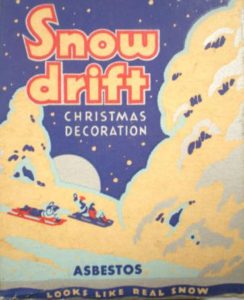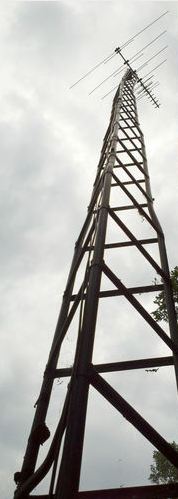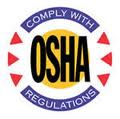Entries tagged with “ACGIH”.
Did you find what you wanted?
Mon 13 Jun 2016
Posted by admin under AIHA, Air Monitoring, Asbestos, Carcinogen, Ethics, Exposure, Federal OSHA, Hazard Communication, industrial hygienist, OSHA, PEL (Perm Exp Limit), Personal Protective Equip (PPE), Respirators, Training
Comments Off on Asbestos settlement – a new precedent?
I was recently forwarded an article on a gentleman who won a large sum of money ($8.75 million) for an asbestos related disease. There are many people getting these types of settlements for similar exposures.
However, what is interesting, is the attorneys argued the company knew about asbestos in 1965, but the exposure occurred in the 1970’s. Keep in mind, the asbestos rules at OSHA didn’t come out until the 1970s as well. So, exposure occurred before the regulations were in effect.
So, they knew of the airborne hazard, but continued to exposure workers before there was a rule. Does this sound like any modern day issue?  –hint– silica?!
Nowadays with the public being uber-aware of “potential” airborne hazards (mold?), with information so readily available, with OSHA rules outdated (annotated Z1 tables), and others publishing health standards like ACGIH,….the lesson is: protect your employees.
IÂ don’t think we should be arguing about the OSHAÂ rules. Let’s use available information and science. “More Than Just A Number” (article published by AIHA, May 24, 2016).

Wed 20 Mar 2013
Posted by admin under ACGIH, Federal OSHA, Hazard Communication, Management, Radiation, Safety Programs, Training
Comments Off on Radiation exposure from Radio/ Tv/ Cell Towers
This type of potential exposure usually doesn’t cross my mind. Luckily, the specifications in the construction project (and the obvious towers nearby), alerted us to the hazard.
If employees are working near areas of potential high electromagnetic (EM) activity, you should do something (see below). High EM potential areas are power lines, cellular towers, TV/Radio broadcast sites, etc. We have all heard the dangers of living under high voltage power lines, and this is essentially the same concern: Non-ionizing radiation.
The FCC has a guidance document OET-65 (radio frequency) which has some recommended limits, called maximum permissible exposures (MPE). These limits vary depending on the frequency range and how close/what type of work you are doing nearby. OSHA (1910.97) has some guidance (based upon an old ANSI standard) and the ACGIH also has recommended limits. New research is ongoing due to the increased use, and the future demand, of cell phones. The clearest guidance is from IEEE (C95 radio frequency). They provide recommendations and a sample plan. But, to summarize:
- look for the source (s) of the radiation (sometimes it’s not obvious)
- take measurements (might be difficult, unless you have access to a field intensity meter) Ask the FCC?
- determine risk potential
- make a plan
- develop controls – time & distance are easiestÂ

- consider off-hours/ shut down of towers (in extreme cases)
- train
- consider:
- cranes, large pieces of equipment that may resonate with a certain frequency
- heat from stored energy
- nondescript symptoms, which is usually the first sign of a problem
This is a somewhat new field (no pun). But, remember when power lines, cell towers, and tv/radio stations were installed. – The goal wasn’t to keep these away from people, it was to bring them closer. How close should we get? I’d love to hear if anyone has been dealing with this a lot in construction.
Tags: ACGIH, cell, electromagnetic, EM, FCC, IEEE, nonioninzing, radiation, radio, towers, tv
Wed 25 Jul 2012
As I have said in an earlier post, some OSHA, EPA, and MSHA rules are a good fit. They blend well with health research, scientific technology, good practices, and a low-cost-of-compliance for employers. Other rules are just bad. They are  totally out of date, not protective enough, or just not feasible/practical. Here’s my plug for a good safety manager/industrial hygienist – A good one will know which rules/guidelines to follow.
The New York Times (July 19, 2012, Cara Buckley) recently wrote an article on the US noise standards which are not protective enough for employees. In construction we also have three additional problems.
- hearing loss is expected (or at least assumed in certain fields – carpenters, sheetmetal, ironworkers, etc.) and,
- work shifts are usually over 8-hours. Noise exposure is usually calculated on an 8-hour time weighted average. During the busy months, an 8-hour work day is rare. It’s at least 10, maybe 12-14 hours. This doesn’t allow your ears to “rest” between shifts. For more information on extended work shifts go here.
- extracurricular activities contribute to overall hearing loss – my point is that most construction workers don’t sit at home at the end of their shift. Almost everyone I know in construction is involved in one of these activities: hunting, shooting, motorcycles, water sports, yard work, cars, wood working/cutting, concerts, music, etc. Each of these activities contribute to their overall hearing loss, and again, doesn’t allow your ears to “rest”.
…which reminds me that I need to keep a set of ear plugs in my motorcycle jacket.

Tags: ACGIH, dBA, dosimeters, EPA, hearing loss, IH, noise, OSHA, safety, sound, sound level, standards, TWA
Fri 8 Jun 2012
On occasion, owners say they just want to do the minimum to be in compliance with OSHA. Most times this is due to lack of understanding.
 For some rules OSHA’s standard is right on the money. Take, for instance, lead (leaded paint) exposure. They have specific rules and guidelines that, if followed, keep virtually everyone protected*. The trouble is that some of OSHA’s rules have not been updated since 1973. New research and industry practices have found these levels to be unsafe even at current standards and exposure limits (PELs).
For some rules OSHA’s standard is right on the money. Take, for instance, lead (leaded paint) exposure. They have specific rules and guidelines that, if followed, keep virtually everyone protected*. The trouble is that some of OSHA’s rules have not been updated since 1973. New research and industry practices have found these levels to be unsafe even at current standards and exposure limits (PELs).
So, how do you know if the OSHA standards are current?
The quick answer is, you don’t.
Good safety professionals and industrial hygienists study the standards, recommended guidelines, and occupational limits worldwide.  In the US, the American Conference of Governmental Industrial Hygienists (ACGIH) provides the most current best practices. However, there are other methods and standards for specific hazards. ANSI, AIHA (although getting more dated due to lack of funding), European OELs (occupational exposure limits), and others.
It is rare that an employer knowingly exposes employees to a hazard. On the other hand, ignorance isn’t acceptable either….which might be the best reason for OSHA to be in existence. I wish they would spend more money on resources, information and training. Â Consult your safety professional!
*recently there is some discussion about low level lead exposure to children



